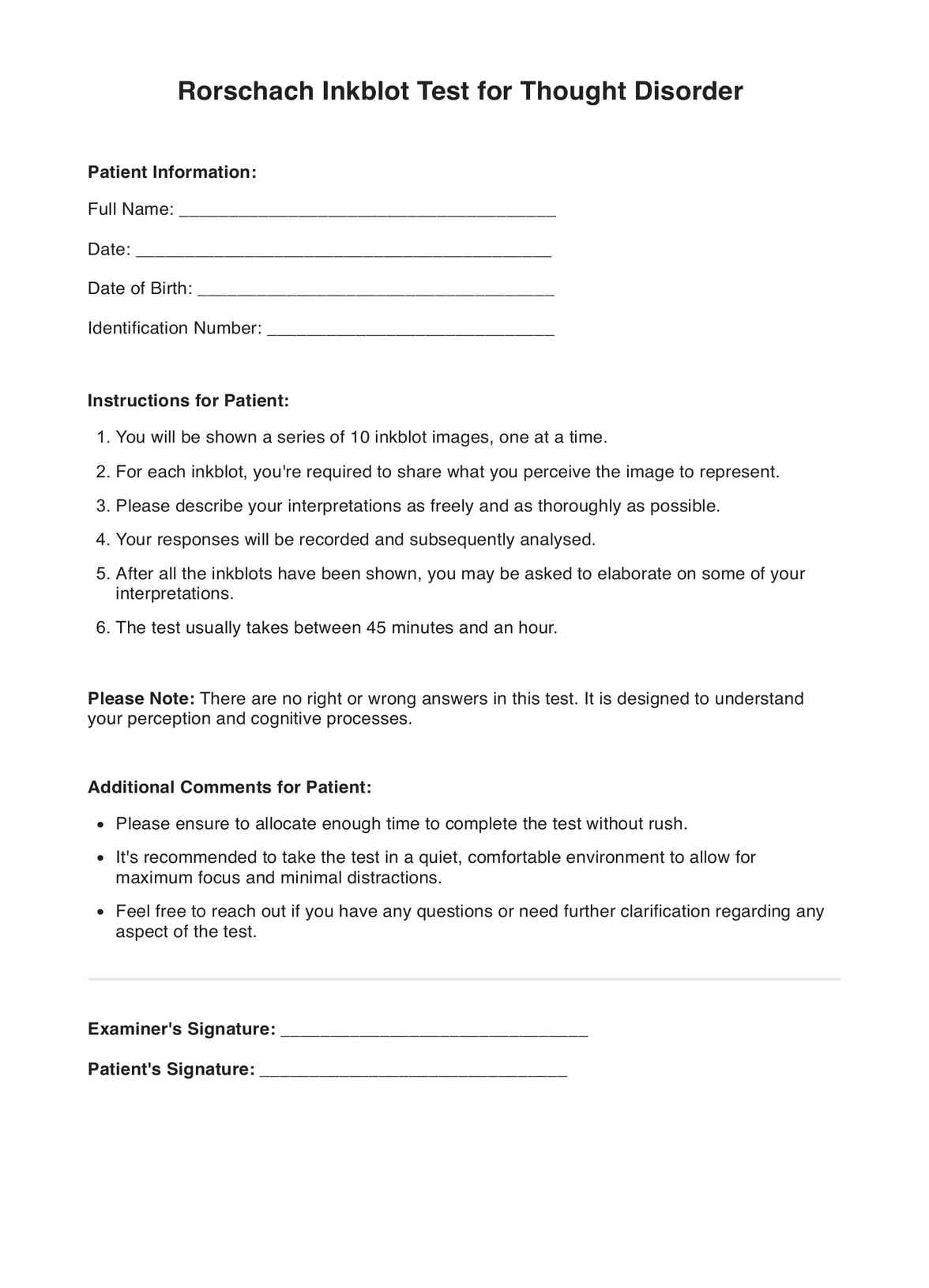The Rorschach Inkblot Test typically takes between 45 minutes and an hour to complete.

Rorschach Inkblot Test for Thought Disorder
The primary purpose of the Rorschach test lies in its capacity to diagnose thought disorders marked by disruptions in thinking, attention, and communication.
Use Template
Rorschach Inkblot Test for Thought Disorder Template
Commonly asked questions
The scores of a Rorschach Inkblot Test are interpreted by analyzing the content, location, and quality of the individual's responses.
The Rorschach Inkblot Test is used when there's a suspicion of a thought disorder, often marked by abnormal speech patterns and cognitive processes.
EHR and practice management software
Get started for free
*No credit card required
Free
$0/usd
Unlimited clients
Telehealth
1GB of storage
Client portal text
Automated billing and online payments











